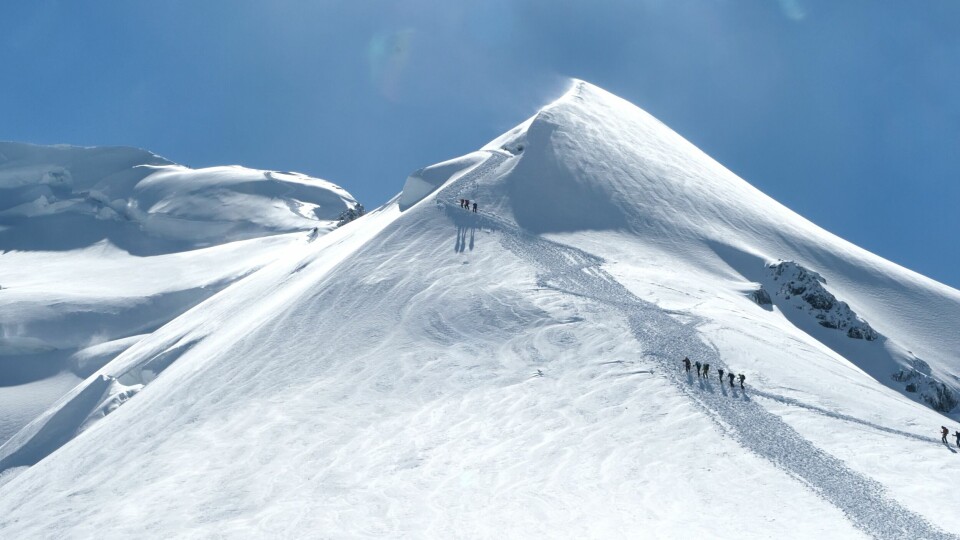-
How many Americans live in Paris - and where else are they choosing in France?
Over a quarter of all US nationals in France live in the capital city
-
Price rises for Netflix in France
The Standard (with ads) and Premium packages are increasing by €24 a year
-
Leclerc supermarkets to sell car fuel at cost price for Easter
The initiative will apply to diesel, petrol, and LPG
Why Mont Blanc has shrunk by two metres in two years
The highest mountain in the Alps now measures 4,805.59 metres

Mont Blanc, the tallest mountain in the Alps and Western Europe, now measures 4,805.59 metres, according to the latest figures – two metres less than when last measured in 2021.
The mountain was measured by a team of 22 surveyors from the Haute-Savoie regional administration, who climbed it in September.
The team recorded the height of the mountain equipped with high-precision tools and, for the first time, with the help of a drone.
The results, published on October 5, suggest the new summit height of Mont Blanc is two metres lower compared to the 4,807.81 recorded in 2021.
Why has the height changed?
When cousins Joseph and Henri Vallot first measured Mont Blanc in 1892, they found a height of 4,807.2 and this became the accepted height by generations.
However since then we have realised the mountain is not a permanent fixed height but something that changes both seasonally and annually.
The change can be a reflection of many things, such as changes in temperature, variations in rainfall and wind strength.
It is for this reason the surveying experts from Haute-Savoie say it is important not to jump to conclusions about what their findings mean.
‘Mont Blanc could well be much taller in two years,” said Jean des Garets, chief geometer for the Haute-Savoie department at a press conference in Chamonix.
The size of Mont Blanc has been oscillating for the last 20 years and “probably has been since the dawn of time,” he added.
How the data is used
The aim of these surveys is to measure the impact of climate change on alpine mountains.
The initiative was launched in 2001 and researchers have been measuring the height of the mountain every two years since then.
“We’re gathering data for future generations,” said des Gerets.
“It is now up to climatologists, glaciologists and other scientists to interpret the data collected and put forward their hypotheses to explain the phenomenon.”
Five Facts about Mont Blanc
Mont Blanc lies along the French-Italian border, but the summit is in French territory.
An 11km tunnel underneath the mountain links Chamonix in France and Courmayeur in Italy.
Glaciers cover approximately 100km2 hence the name which means ‘white mountain’ in English.
Every year around 30,000 people attempt to climb this icy peak, with closer to 20,000 actually completing it.
Michel-Gabriel Paccard, a doctor from Chamonix and his porter, Jacques Balmat were the first people to climb Mont Blanc, conquering the summit in 1786.
Read also
The Franco-Scottish teen on track to break mountain-climbing record
French ski stations appeal higher costs for seasonal employees
























